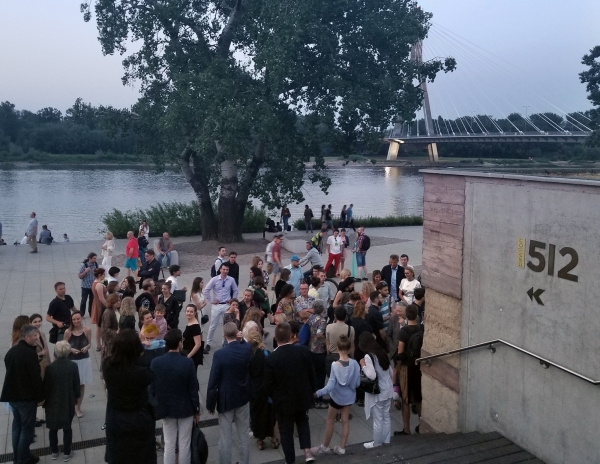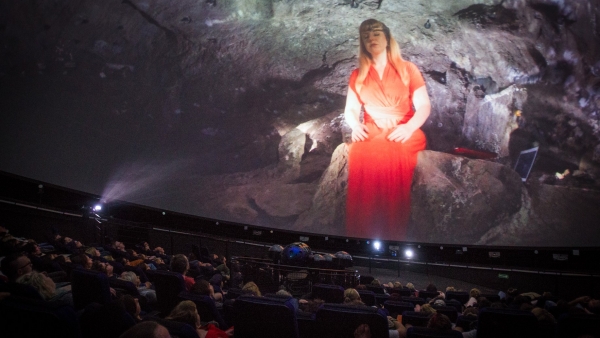
The American Arts Incubator – Poland “Layers of Life” workshop questioned “What is Life in the Bio-Tech Era?” through the lens of empowerment – exploring this pivotal point we are at in evolution across many strata, including personal, social, emotional and environmental impact, questioning how we can empower ourselves and our world, creating concepts and projects that provoke new ideas to shape a more resilient future.
Our inquiry resulted in presentations at a pitch event and an exhibition titled "Wystawa Warstwy życia" or "Layers of Life: What is Life in the Bio-Tech Era?" at Centrum Nauki Kopernik/ Copernicus Science Centre in Warsaw, Poland. It was a very inspiring month of growth and development working together. The work was exceptional, and the amount of development and accomplishment in this short period of time was nothing less than astounding. I felt proud of the participants and proud to be involved.
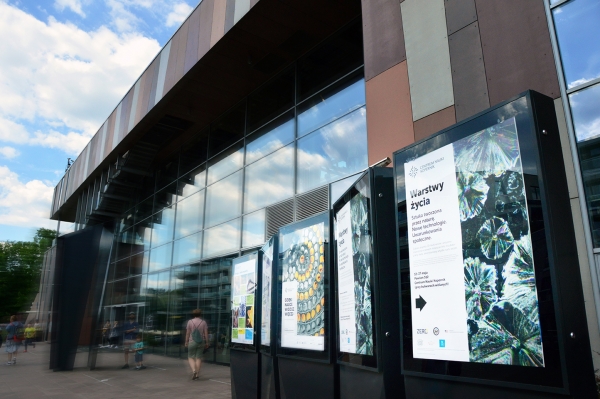
Posters outside of Copernicus Science Centre announcing “Layers of Life” Exhibition. Photo by Amy Karle.
The opening night was May 11, 2018. The evening kicked off with presentations from each group, who presented their projects and competed for funding to continue the work before a 200+ member audience and esteemed panelists: Aleksandra Hirszfeld — philosopher, artist, curator, writer/journalist; Joanna Jeśman — Culture Expert, Professor, Researcher; Wiktor Gajewski — Director of Copernicus Science Centre, Dan Hastings — Cultural Attaché, US Embassy Warsaw; and Amy Karle — Bioartist, Artist in Residence at Copernicus Science Centre, American Arts Incubator Exchange Artist, and teacher/faciliator for American Arts Incubator — Poland “Layers of Life” workshop class.
The pitches and projects were impressive and well-conceived in their creation and presentation. The judges asked poignant questions and gave great feedback! In the end, we determined all of the projects were so strong that the sustainability award funding would be divided equally amongst all groups so that they could all continue to pursue their great work. Thank you to our panelists for intriguing questions and thoughtful feedback, and thank you to the participants for your thoughtful and inspiring work!
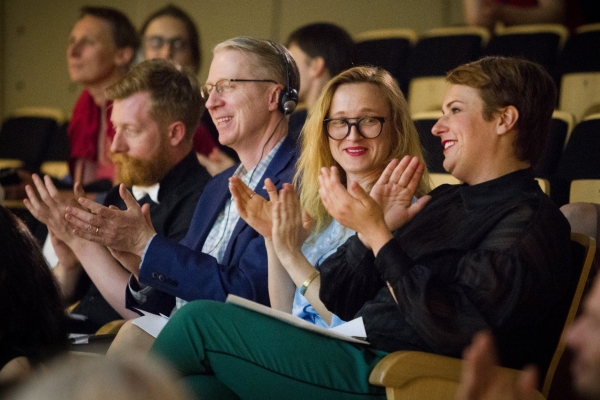
The opening of the exhibition “Layers of Life: What is Life in the Bio-Tech Era” at the Copernicus Center Pavilion overlooking the Vistula River was a celebration of the learnings, advancements, and achievement, and shared the projects which were a collection of art installations and bio-art projects in the fields of science, technology, engineering, arts and math (STEAM). The show and the event was a huge success! Over 500 attendees visited the exhibition throughout the evening.
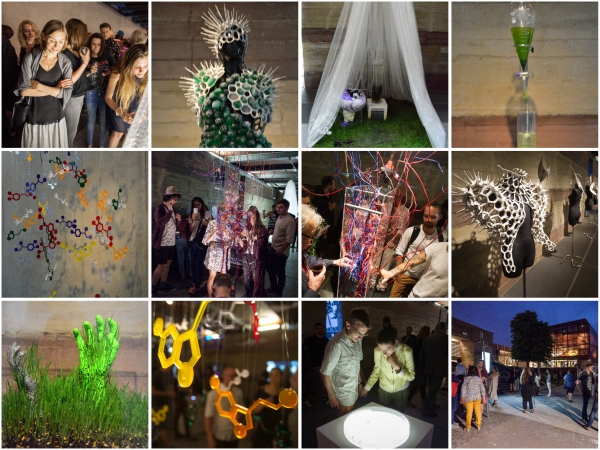
At the end of the night, The "Heavens of Copernicus" Planetarium at Copernicus Science Center hosted a special screening of a film by Artist Amy Karle recorded primarily from her work in the salt mines in southern Poland and under the microscope in the biolab at Copernicus.
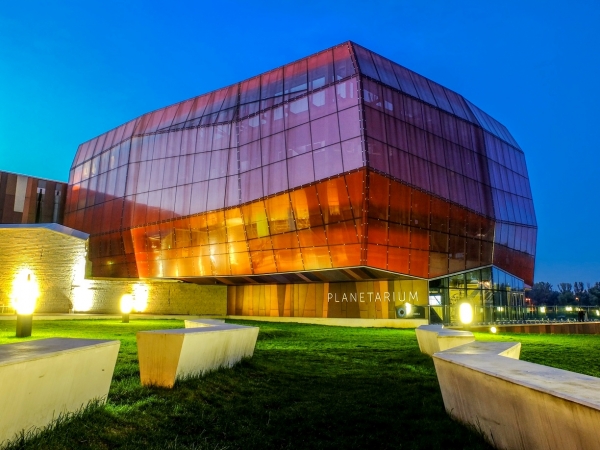
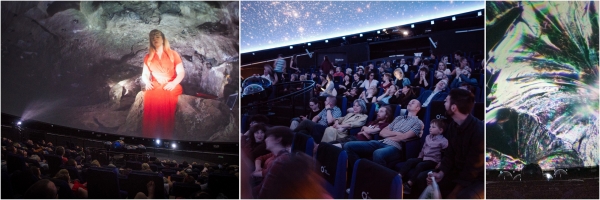
The point we are at in evolution is biology and technology merging. This can be destructive or empowering depending on how we use it. I explore how nature creates and how to use this mergence with technology to our benefit: to heal, enhance and empower us. My larger project as an artist studies what it means to be human. I use the body, art and design, science and exponential technology (including 3D printing, regenerative medicine / synthetic bio, AI, etc.) as mirrors to the self and mirrors to who we can become.
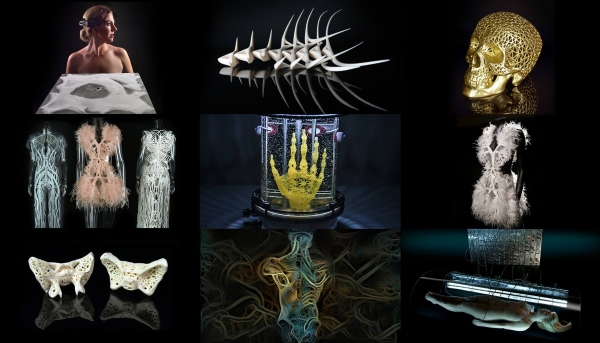
As American Arts Incubator Exchange Artist and Artist in Residence at Copernicus, I considered "Layers of Life" and how we form: biologically/socially/emotionally/spiritually — on all levels, while questioning, “What is life in the bio-tech era?” I wanted to transcend these layers — from the micro to the macro, from the individual to the social, from the internal to the external, from the depths of the earth to the sky, space, and beyond.
I conducted research in the labs at Copernicus Science Centre and in two UNESCO heritage sites: the Wieliczka and Bochnia Royal Salt Mines; in one of the deepest parts of the earth accessible to humans (in Bochnia), and studied concepts of space at Copernicus. I also researched how nature forms and grows: in this case, the natural additive manufacturing (natural 3D printing) of salt water/brine and crystallization. I considered salt as a vital, life-sustaining element in our bodies and of our earth, and learned about theories surrounding the origins of life, which astrobiologists propose may have began with salt.
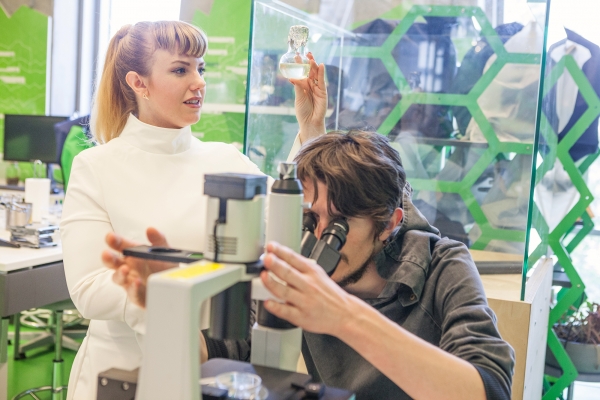
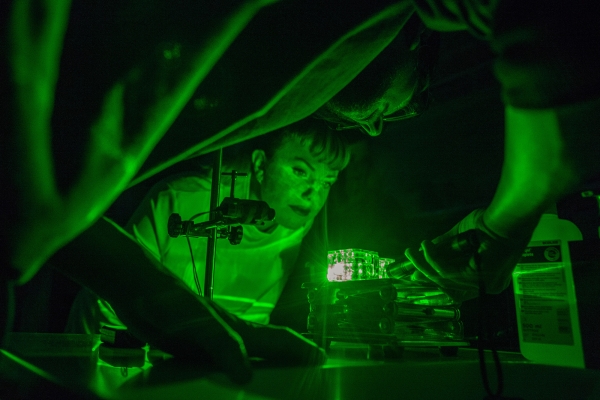
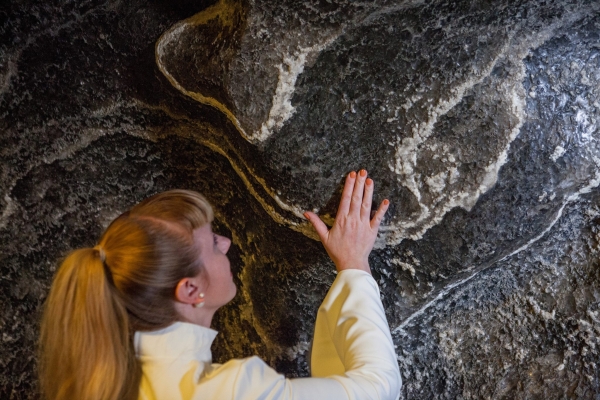
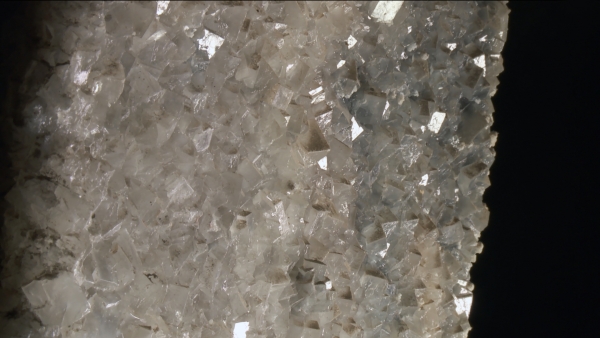
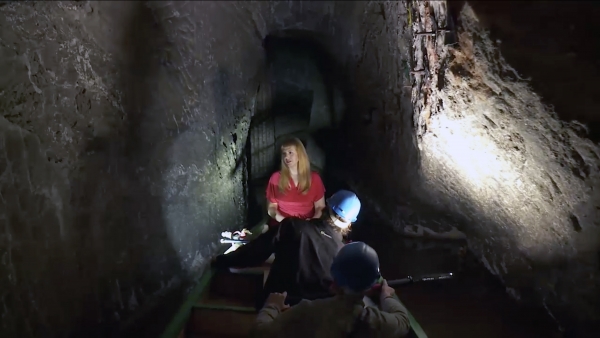
ARTISTIC RESEARCH in labs and mines conducted with the support of Copernicus Science Center Bio Lab, Stanisław Loboziak, Wieliczka and Bochnia Royal Salt Mines.
PRINTS Crystallization under various conditions under the microscope. Created in the Biolab at Copernicus Science Center with support from Stanisław Łoboziak:
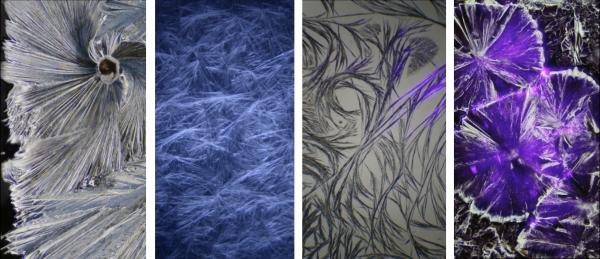
PERFORMANCE ART in Wieliczka Salt Mine. Film by Grain Films, software by Aaron Thomen, with support and sponsorship by Wieliczka Salt Mine.
SCULPTURE on the origins of life in salt and water. Considering the role of salts in our bodies, earth and universe; how nature forms and grows; and women's empowerment, these works are 3D printed sculptures with natural additive manufacturing crystal growth. “Crystal Copernicus” is a large scale sculpture made with generous sponsorship by Titanic Design and support from Benjamin Julian.
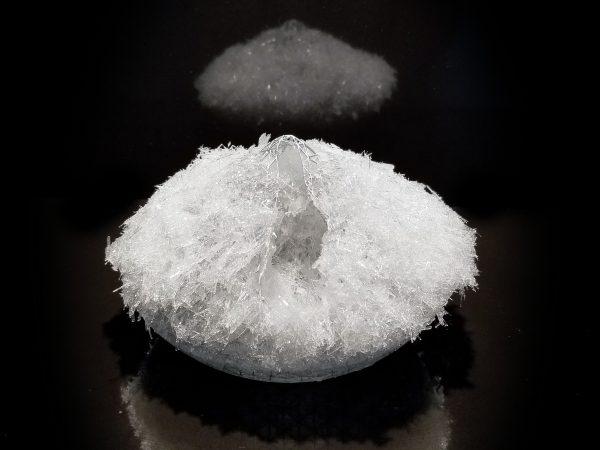
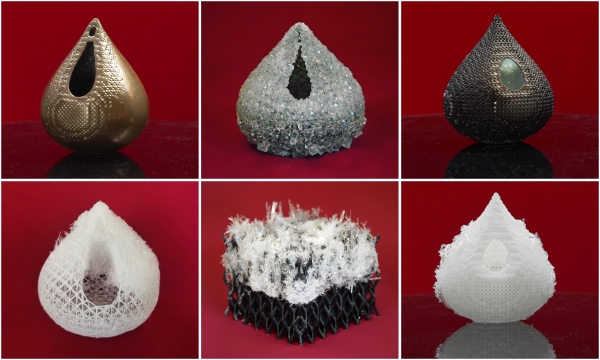
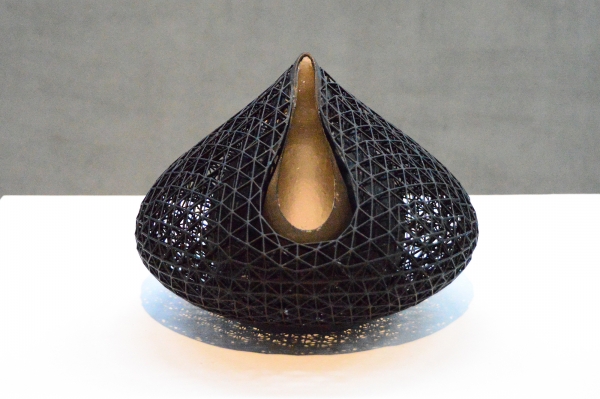
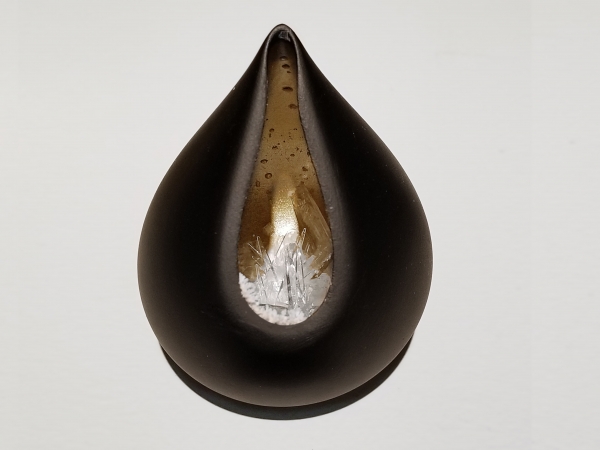
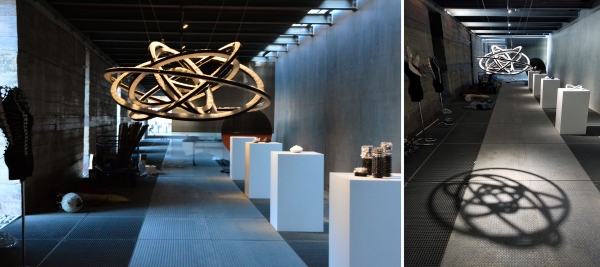
PLANETARIUM SHOW artistic video and sound art in Planetarium exhibition created with Grain Films (Maciej Przemysław Wróbel, Kacper Bartczak, Adam Woropiński, Piotr Wilhelmi), Copernicus Planetarium Team (Weronika Śliwa, Mateusz Borkowicz, Paulina Majda) and Copernicus Bio Lab / Stanisław Loboziak.

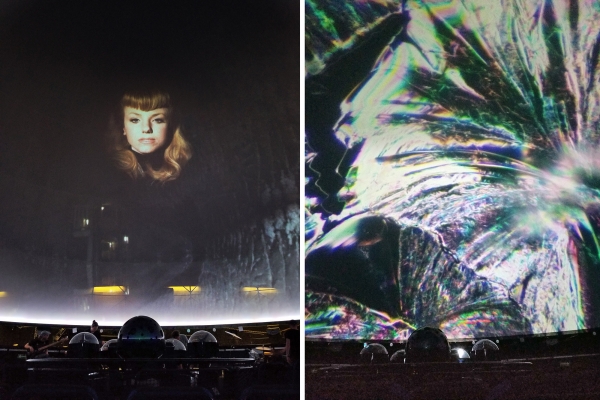
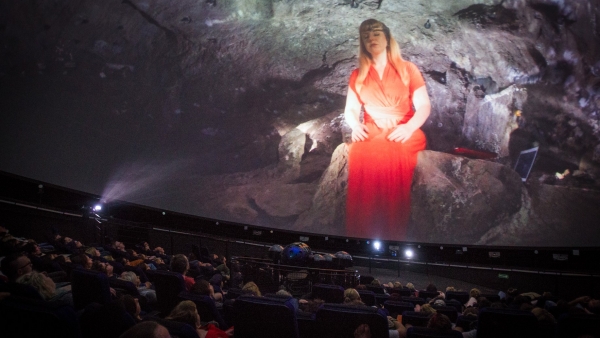 Film and Photos by Amy Karle, Grain Films at Centrum Nauki Kopernik.
Film and Photos by Amy Karle, Grain Films at Centrum Nauki Kopernik.See more images of Amy Karle’s artwork made while American Arts Incubator Exchange artist in the Facebook album Amy Karle's Artwork and on her website, Instagram, Facebook, and Twitter.
A very special thank you to: Bureau of Educational and Cultural Affairs — U.S. Department of State's , ZERO1, U.S. Embassy in Warsaw, Centrum Nauki Kopernik, Kopalnia Soli "Wieliczka", Kopalnia Soli "Bochnia" Planetarium Niebo Kopernika, Titanic Design: Rapid 3D Printing, Grain Films, and all those without whose generous support this project would not be possible.
Aggregation of biological data extracted from our bodies is a fact. Our virtual identities are being turned into a resource. The body, which used to be the source of power/life/vitality, is being turned into a generator of data, which is then used in ways that we often find mysterious. Global corporations know us better than our partners, families, and friends — better than we know ourselves.
Is escapism the only alternative to being a passive data provider? Can this situation be seen not only as a threat but also an opportunity? Can our interference with the digital data collection systems create a new space for social change?
Empowerment does not happen in the process of alienation but consolidation. Together we become strong. We believe in collective intelligence and cooperation between humans and technology. The installation “Pulse Translator” proposes a tool that transforms biological data and uses them to generate a new message.
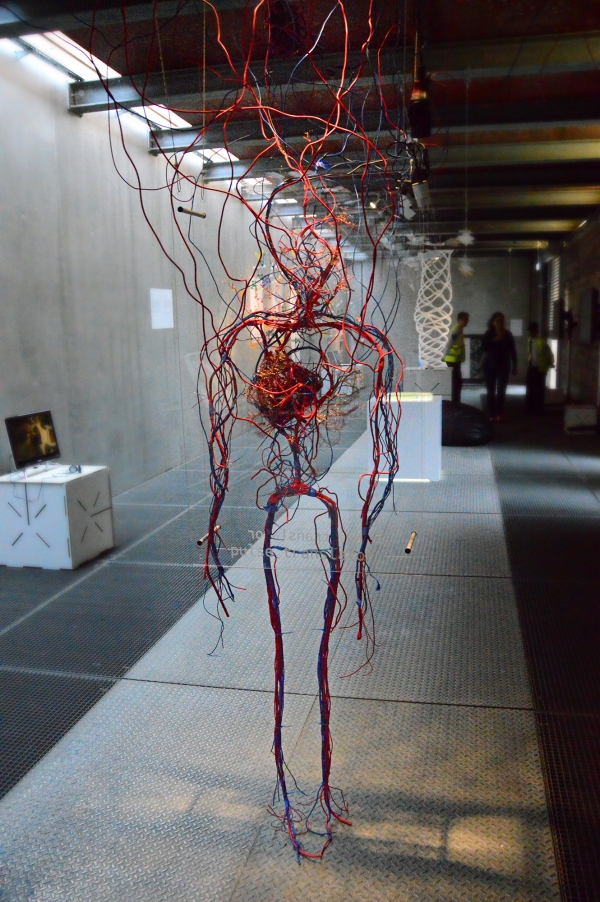
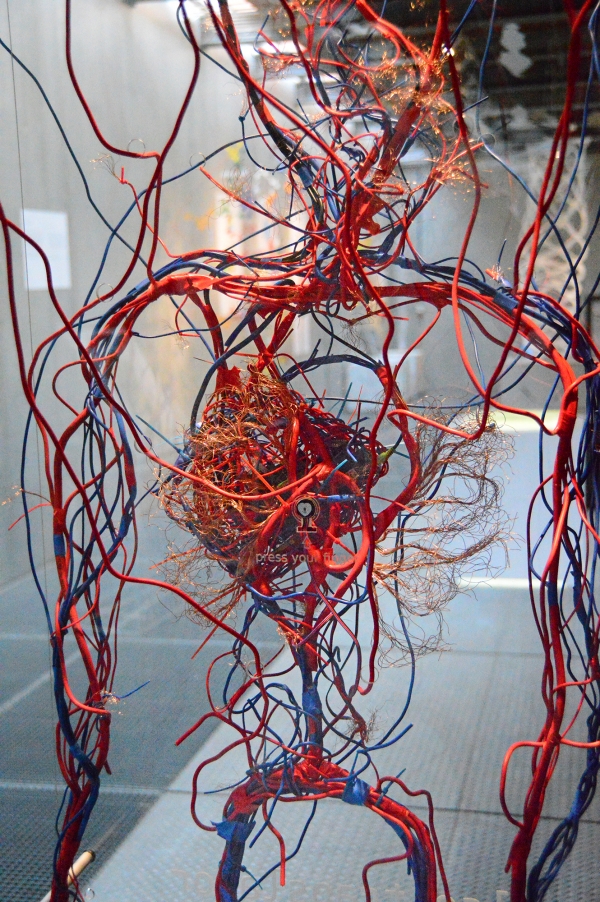
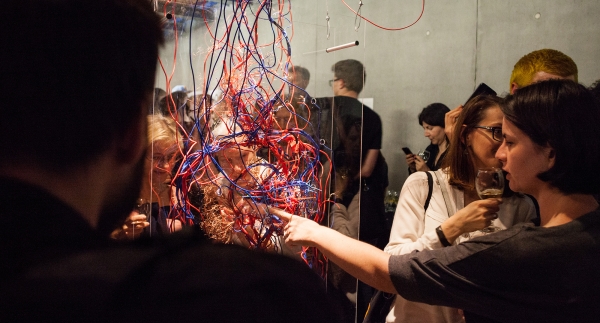 Pulse Translator, 2018. Photo by Grain Films.
Pulse Translator, 2018. Photo by Grain Films.PULSE TRANSLATOR collaborators would like to give special thanks to: Copernicus Science Centre, AAI, Amy Karle, Piotr Gołąbek, Piotr Pobłocki, Dagmara Kiradze, Mateusz Pawełczuk, Jacek Rosiński, Monika Urbaniak, and Kinga Szymańska. Created in cooperation with FabLab powered by Orange.
The Breath of Life is a prototype of a chamber with an oxygen reactor that intensively produces oxygen by water plants. The lung cleansing ritual is based on aquatic plants: cabbage and Canadian urea, which, thanks to their ability to carry out an intensive photosynthesis process, provide continuous oxygen production.
The project is a response to the growing problem of air pollution and everyday stress. We live fast on a day-to-day basis and do not think about processes such as photosynthesis carried out by plants to obtain oxygen which is essential for our lives. We are building roads, factories and many others structures, leading to the destruction of more and more plant species, resulting in the development of many civilizational diseases.
The chamber allows us to perceive with the naked eye this invisible-essential life function thanks to the oxygen bubbles produced by plants. The project shows in a physical way the process of photosynthesis and how important their preservation is to our survival.
Additionally, the chamber is a place where you can calm down and regenerate your lungs using conscious breathing. The high oxygen content has a positive effect on brain activity, which is the added value of the project. This experience is accompanied by breathing instructions to optimize body oxygenation and relaxation. Why is this so important? Because for most people stress is a factor that blocks them from developing their competencies. We can control this by breathing!
Breath is a powerful tool to regulate our mind and emotions. To enhance the experience, we’ve created a light and sound structure on the head to visualize the rhythm of breathing (by changing the color of the lights in coordination with the inhale and the exhale) with a mask through which air is taken in during breathing, saturated with oxygen from the reactor. Vases with water plants are live bioreactors that can filter air on the industrial scale and convert carbon dioxide into oxygen.
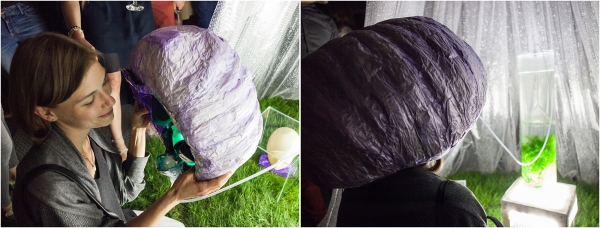
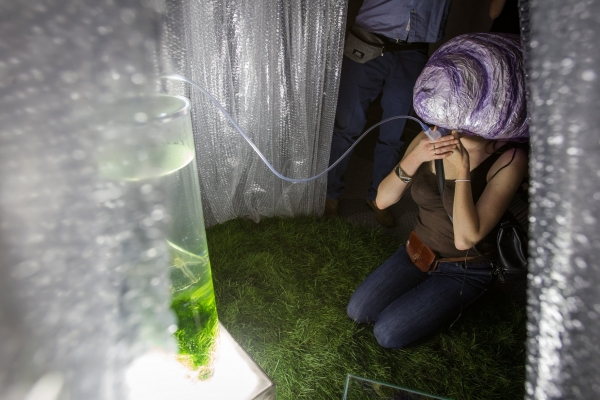 Breath of Life installation. Photo by Centrum Nauki Kopernik.
Breath of Life installation. Photo by Centrum Nauki Kopernik.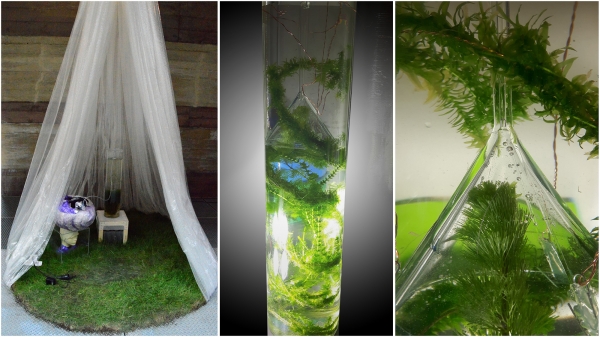 Breath of Life, 2018. Overview of installation and details. Photos by Amy Karle and Breath of Life.
Breath of Life, 2018. Overview of installation and details. Photos by Amy Karle and Breath of Life.
BREATH OF LIFE collaborators would like to give special thanks to: Copernicus Science Centre, AAI, Amy Karle, FabLab powered by Orange and Bartosz Andrzejczak.
Recent scientific discoveries are turning our attention towards the ability of plants and animals to perform photosynthesis, a process which until recently been attributed only to the plant kingdom. In our project, we ask questions and speculate about the possibility of using this mechanism. We travel to the future where plant-based tissue garments with chloroplasts and printable chloroplast tattoos can give us an extra shot of energy. The costume is accompanied by an installation showing the process of immobilizing algae Scenedesmus obliquus and closing them in alginate spheres. We were inspired by symbiotic relationships between plants and animals.
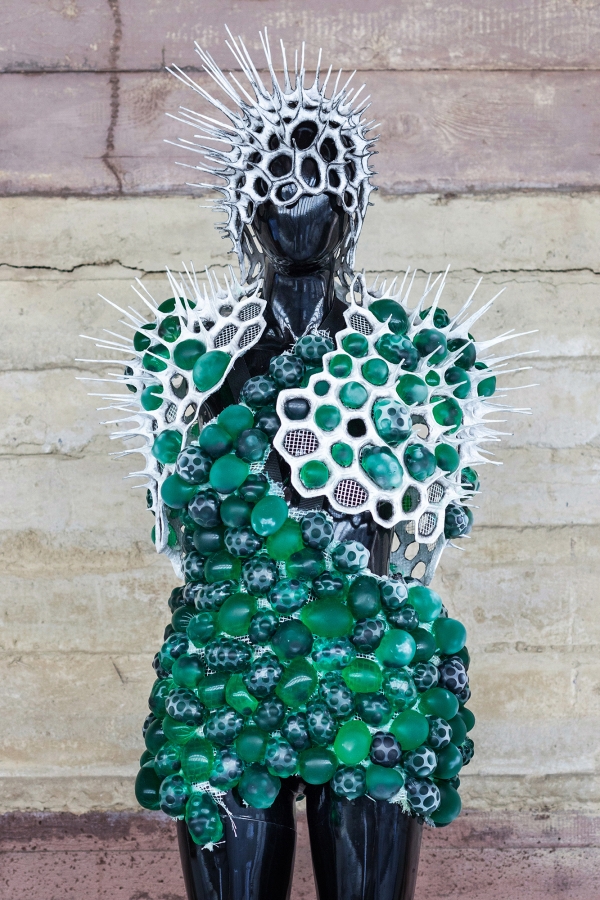
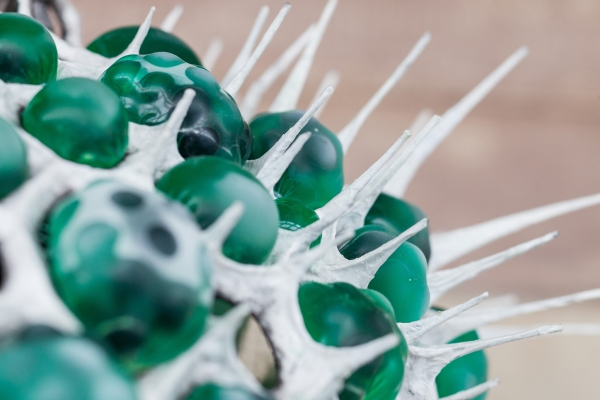 Chlorobody garment by Nika Danielska and Pola Demianiuk. Photo by Grain Films / Kacper Bartczak.
Chlorobody garment by Nika Danielska and Pola Demianiuk. Photo by Grain Films / Kacper Bartczak.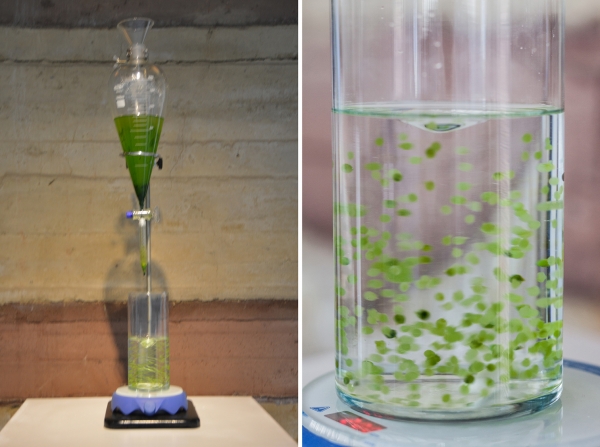 Immobilizing Scenedesmus obliquus algae in alginate spheres by Stanisław Łoboziak. Photo by Grain Films.
Immobilizing Scenedesmus obliquus algae in alginate spheres by Stanisław Łoboziak. Photo by Grain Films."The Breath of Life", "Oddech życia" by Agi Sadurska. Film accompanying Chlorobody / Plantenstein and sister project Breath of Life.
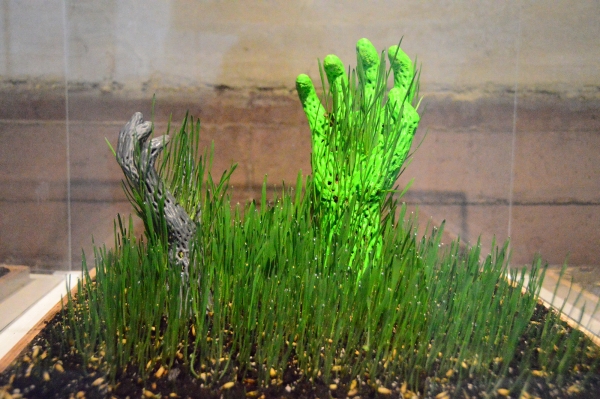 Plantenstein by Karolina Sulich. Photo by Amy Karle.
Plantenstein by Karolina Sulich. Photo by Amy Karle.CHLOROBODY / PLANTENSTEIN collaborators would like to give special thanks to: Copernicus Science Center, AAI, Amy Karle, Piotr Gołąbek i Piotr Pobłocki from Fab Lab powered by Orange.
We are currently able to culture only 1% of our microbiome in laboratory conditions. It is 2 kg of our body weight and affects our health and well-being. We were inspired to build a Petri dish that is 60 times bigger than the standard size, where we gathered microorganisms living on our workshop group cell phones.
Here, we can observe their mutual interactions, which also take place when we shake each others hands, kiss another person, or move through the world. It is a visualization of the world that is not accessible to us because we can not perceive it with the naked eye. Moreover, we usually relate bacteria to being sick, whereas only a small fraction of them are pathogenic. Most of them collaborate with us, protect our organisms, and drive life on our planet. Our microbiome is our unique biological imprint.
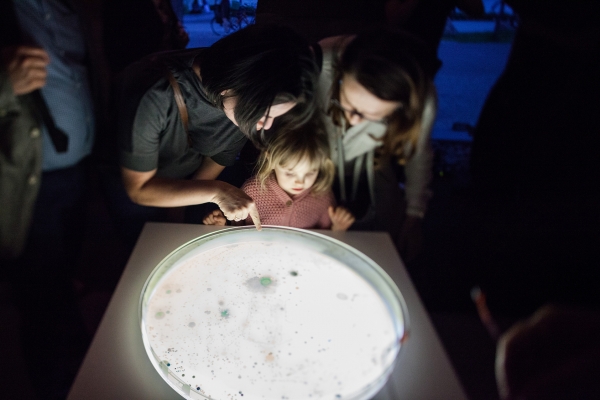
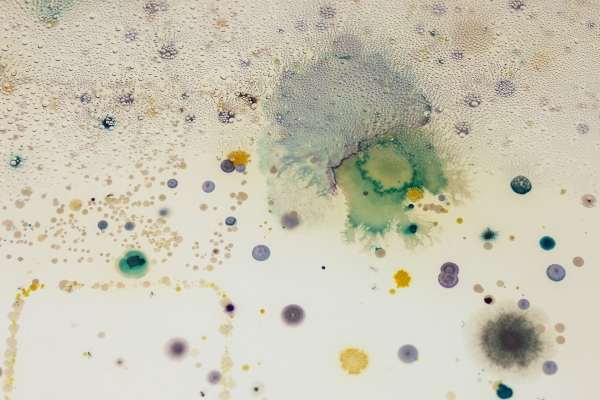
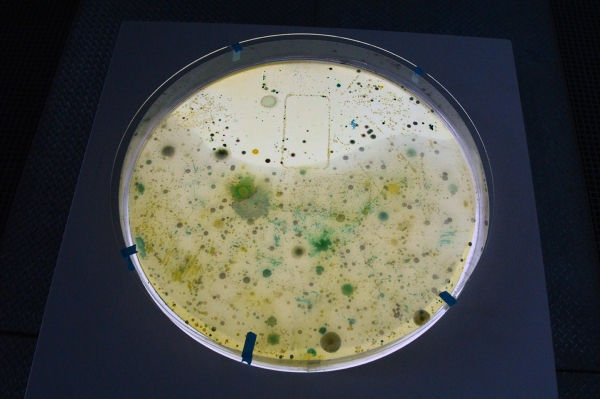 P.D., 2018. Photos by Grain Films and Amy Karle.
P.D., 2018. Photos by Grain Films and Amy Karle.P.D. would like to give special thanks to: Copernicus Science Center, AAI, Amy Karle, Piotr Gołąbek i Piotr Pobłocki from Fab lab, Kuba Stańczyk from “Dobry Plan," and company Plexipol.
How does our mind process emotions and how does our body use them? Could visualizing our emotional processes make it easier for people to express their feelings and understand the feelings of other people? How would our body and our society work if knowledge of emotions was more common? Would we be healthier if we knew how positive emotions are formed?
We want to show the unnoticeable, a layer that connects all the people in the world, and help them create beautiful and wise things. We want our recipients to see, hear, and experience by themselves the way emotions work, what they are used for, and how to use them. We want to encourage scientists to study emotions.
Our goal is to create the Pavilion of Emotions, a place that will fill our educational gap and help us gain knowledge around emotions, making it easier for us to make good and wise choices. The Pavilion will be a place of education, inspiration, and stimulation of our imaginations, where people will be invited to explore how important emotions are in our lives. At the exhibition, you will see a model of the Pavilion that symbolizes the mission of our project.
We used the model of Paul Ekman, which describes the six basic emotions that account for all the richness in our emotional lives. Our project’s main characters are Sorrow, Anger, Fear, Disgust, Enjoyment, and Surprise.
We have created an artistic visualization of sound waves accompanying words that describe our feelings and molecules of chemical compounds that co-create emotional states in our brain: dopamine — whose deficiency causes sadness, adrenaline — released by anger, noradrenaline — a fear-related compound, histamine — related to disgust, serotonin — a neurotransmitter associated with joy, and acetylcholine — which triggers surprise.
We have also designed a new Molecule of Empowerment. Who knows, maybe soon it will turn out that there is a molecule in our bodies that brings out the best in us?
The project also features a Dictionary of Indeterminate States – an educational game that encourages people to reflect on how the expression of feelings is culture-related.
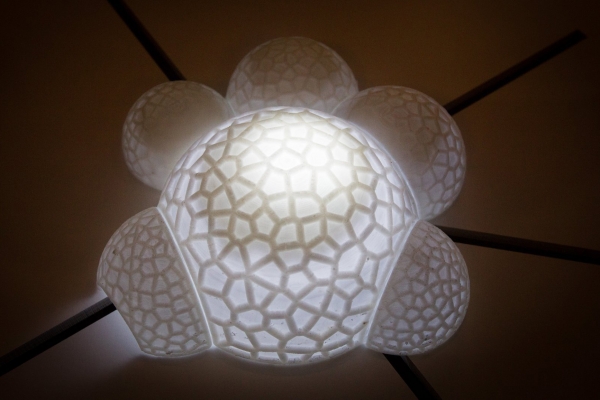
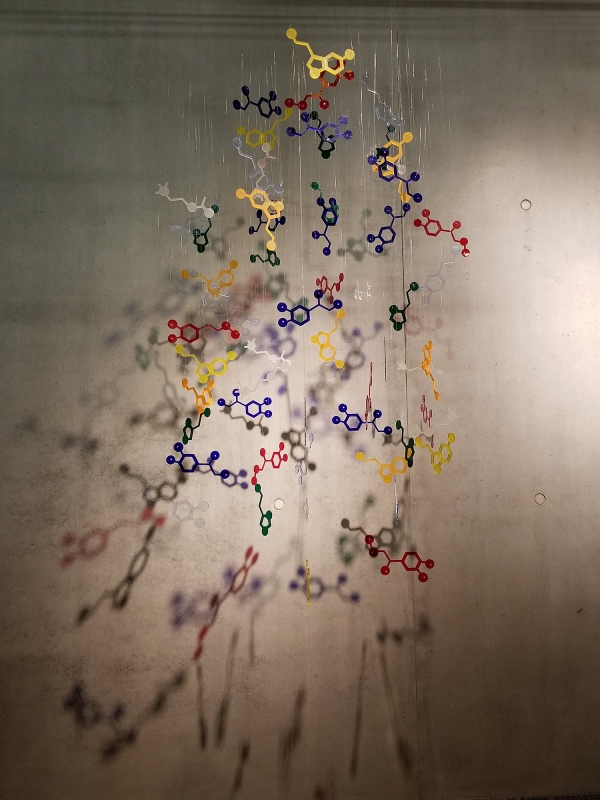
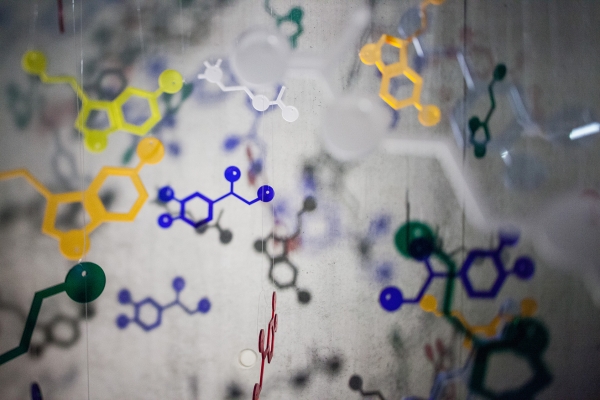 Installation representing molecules. Photos by Amy Karle and Grain Films.
Installation representing molecules. Photos by Amy Karle and Grain Films.Follow and learn more about LAYERS OF EMOTIONS at www.facebook.com/layersofemotions or www.facebook.com/niedookreslone
LAYERS OF EMOTIONS was created in cooperation with FabLab powered by Orange with special thanks to: Copernicus Science Center, AAI, Amy Karle.
Inwertomin is a visual representation of air monitoring stations. It encourages you to stop, breathe in fresh, pleasantly cold, and clean air, and to reflect on the problem of air pollution in the city.
Inwertomin is based on the concept of a reversion of the traditional chimney. Instead of spitting out hot fumes, it absorbs polluted air from above and releases it cleaned through the bottom side. The device's functional base is a cooling and moisturizing installation which moves the air inside downwards. One of the solutions we considered in order to achieve this effect is using a cooling substance in Inwertomin's external layer. Inwertomin's core consists of air filters inspired by coral reefs and moss. Their structure enables airflow within large surfaces. The pollution gathering on the filters causes Inwertomin to change its color from white to brownish-grey. The Inwertomin transforms itself gradually according to the airflow — it becomes dirty at the top and remains clean at the bottom. It acts as a warning totem visualizing the degree of air pollution.
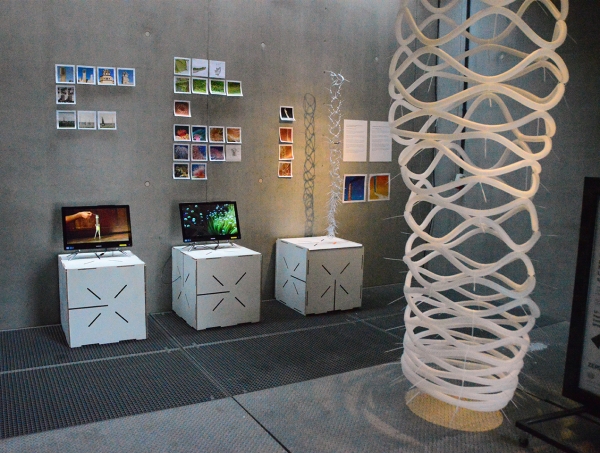 Inwertomin installation at "Layers of Life" Exhibition. Photo by Amy Karle.
Inwertomin installation at "Layers of Life" Exhibition. Photo by Amy Karle.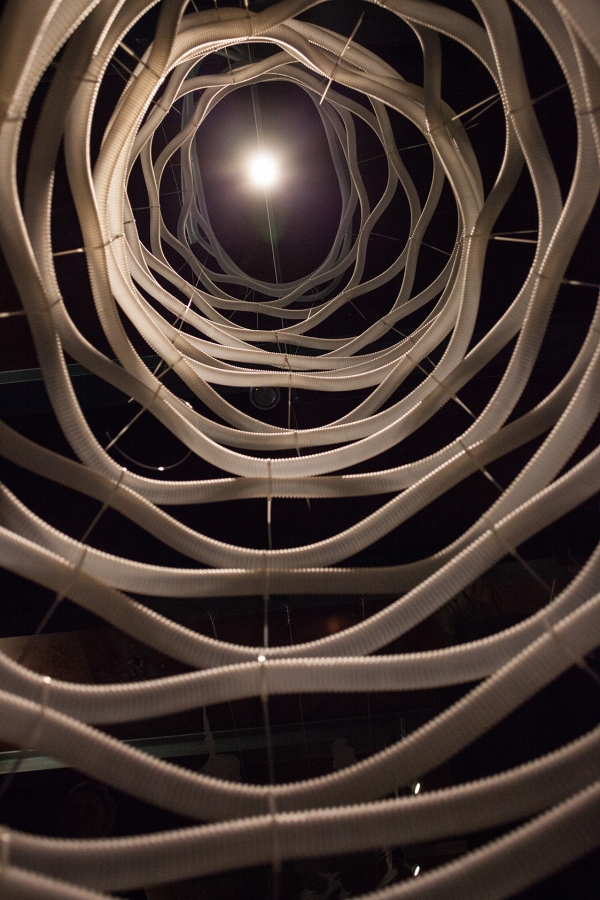 Inwertomin, 2018. Photo by Grain Films.
Inwertomin, 2018. Photo by Grain Films.*Descriptions on the projects above were provided by each team.
These projects were produced as part of American Arts Incubator, an initiative of the U.S. Department of State's Bureau of Educational and Cultural Affairs and is administered by ZERO1. The incubator in Poland was produced in collaboration with U.S. Embassy Warsaw and the Copernicus Science Centre.
As an American Arts Incubator exchange artist, Artist Amy Karle’s task was to focus on public diplomacy and social innovation to empower women in STEAM in Warsaw, Poland. She led workshops and field trips, taught new media art skills, encouraged collaboration, and facilitated and supported teams to create community projects using art and technology to address social challenges in the model of a hybrid artist residency and Silicon Valley type incubator. The workshop concluded with the presentations, a panel review, small grants funding, and the public exhibition discussed above.
Follow the conversation, get updates and inspiration at American Arts Incubator — Poland Facebook group at: https://www.facebook.com/groups/361402877645612/
